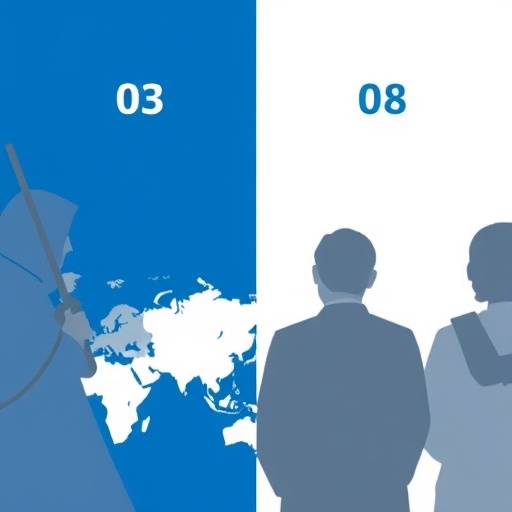In the sphere of geriatric medicine, understanding the contributor factors to emergency department visits is of paramount importance, particularly in relation to falls, which are a leading cause of injury among older adults. A recent cross-sectional study authored by Fellhölter, Stuckenschneider, Himmelmann, and colleagues sheds light on this pressing issue by comparing patient self-reports with general practitioner records regarding visits to emergency departments due to severe falls. This research raises critical questions about the reliability of patient-reported outcomes and how they align with documented medical histories, which is essential in addressing the health risks faced by the elderly population.
Falls can have devastating consequences, leading not only to physical injuries but also to psychological implications, including fear of falling again, which can further restrict mobility and independence among older adults. In this context, the study meticulously investigates how these dire incidents are reported from both the patient perspective and the formal documentation by healthcare providers. The findings underscore the discrepancies that often exist between subjective experiences of patients and objective medical records, prompting discussions on how best to approach fall-related healthcare in this demographic.
The methodology employed in the study is notably rigorous. By conducting a cross-sectional analysis, the researchers recruited a substantial number of participants, ensuring a diverse representation of the aging population. Participants were surveyed to gather their self-reports on falls, while simultaneous data collection from general practitioners provided an objective viewpoint on the incidents and visits to the emergency department. This dual approach is significant, as it allows for a more nuanced understanding of the factors influencing falls among seniors, which could ultimately inform better clinical practices.
Interestingly, the study also evaluates the potential reasons behind discrepancies found between patient self-reports and general practitioner records. Factors such as cognitive decline, communication barriers, or even varying health literacy levels play a crucial role in how elderly patients perceive and report their falls. This aspect of the research resonates deeply, as it highlights the need for healthcare professionals to enhance their communication strategies to ensure accurate recording of incidents that could lead to timely interventions.
Moreover, the research also touches upon the demographic differences in fall-related incidents and reporting. It examines how age, gender, and comorbidity influence the types of falls experienced and the likelihood of reporting them. For instance, older women may experience falls differently compared to older men, not only physically but also in terms of their willingness to seek help and report these incidents. Understanding these nuances could empower healthcare systems to tailor preventive measures specifically designed for different segments of the geriatric population.
Another critical aspect explored in the study is the role of healthcare access in fall reporting. Access to healthcare services can vary significantly based on geographic locations, socioeconomic status, and available health resources. By analyzing how these factors affect emergency department visits due to falls, the study provides essential insights into the systemic barriers that may hinder older adults from receiving the care they need. This can inform policymakers and healthcare providers about the necessity for more equitable healthcare solutions.
Furthermore, the research advocates for the implementation of standardized fall assessment protocols in emergency departments. Currently, the approach to evaluating fall incidents can be inconsistent, which may lead to a lack of appropriate intervention strategies for patients. By advocating for a comprehensive assessment process that includes both patient self-reports and clinical evaluations, the researchers aim to bridge the gap between subjective assessments and objective medical records.
In light of the study’s findings, it becomes evident that addressing the issue of falls in the elderly requires a multifaceted approach. Preventive strategies must consider not only the physical factors that lead to falls, such as muscle strength and balance, but also the psychological and social dimensions that influence an older person’s willingness to report incidents. This holistic understanding is vital in developing effective intervention programs that can significantly reduce fall-related injuries among seniors.
As the senior population continues to grow globally, the implications of this research become increasingly critical. The aging demographic is often at a heightened risk of falls due to various factors, including frailty, chronic illnesses, and environmental hazards. Therefore, this study serves as a wake-up call for health professionals to rethink their strategies in assessing and addressing the multifarious challenges that contribute to falls in older adults.
In conclusion, the comparison of patient self-reports and general practitioner records is not merely an academic exercise; it has real-world implications that could impact tens of thousands of seniors who experience falls annually. By fostering a culture of open communication between patients and healthcare providers, emphasizing the need for accurate reporting, and addressing the multifaceted aspects of fall risk, the healthcare community can take significant strides in mitigating the dangers of falls in the elderly.
This research not only highlights the current gaps in understanding fall incidents but also poses an essential call-to-action for the healthcare industry. With rigorous data-driven evidence, it advocates for reforms that could lead to better outcomes for one of the most vulnerable populations in society. As we reflect on our approach to elderly care, let us prioritize comprehensive strategies that recognize the complex reality of falls and empower elderly patients to achieve better health outcomes.
Subject of Research: Analysis of emergency department visits due to severe falls among elderly patients.
Article Title: Emergency department visits due to severe falls: comparing patient self-reports and general practitioner records: A cross-sectional study.
Article References: Fellhölter, G., Stuckenschneider, T., Himmelmann, L. et al. Emergency department visits due to severe falls: comparing patient self-reports and general practitioner records: A cross-sectional study. BMC Geriatr 25, 757 (2025). https://doi.org/10.1186/s12877-025-06411-9
Image Credits: AI Generated
DOI:
Keywords: Elderly, Emergency Department, Falls, Patient Self-Reports, General Practitioner Records.
Tags: cross-sectional study methodologydiscrepancies in health reportingemergency department visitsfall-related healthcare approachesgeneral practitioner recordsgeriatric medicinehealth risks for elderly populationinjury prevention in elderlyolder adults’ mobility and independencepatient self-reports on fallspsychological implications of fallsreliability of patient-reported outcomes





